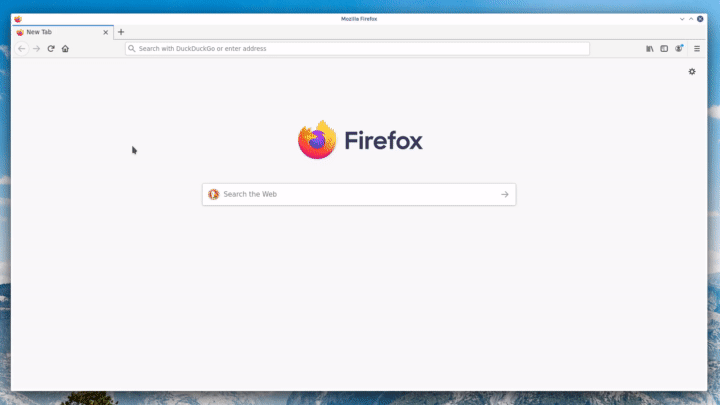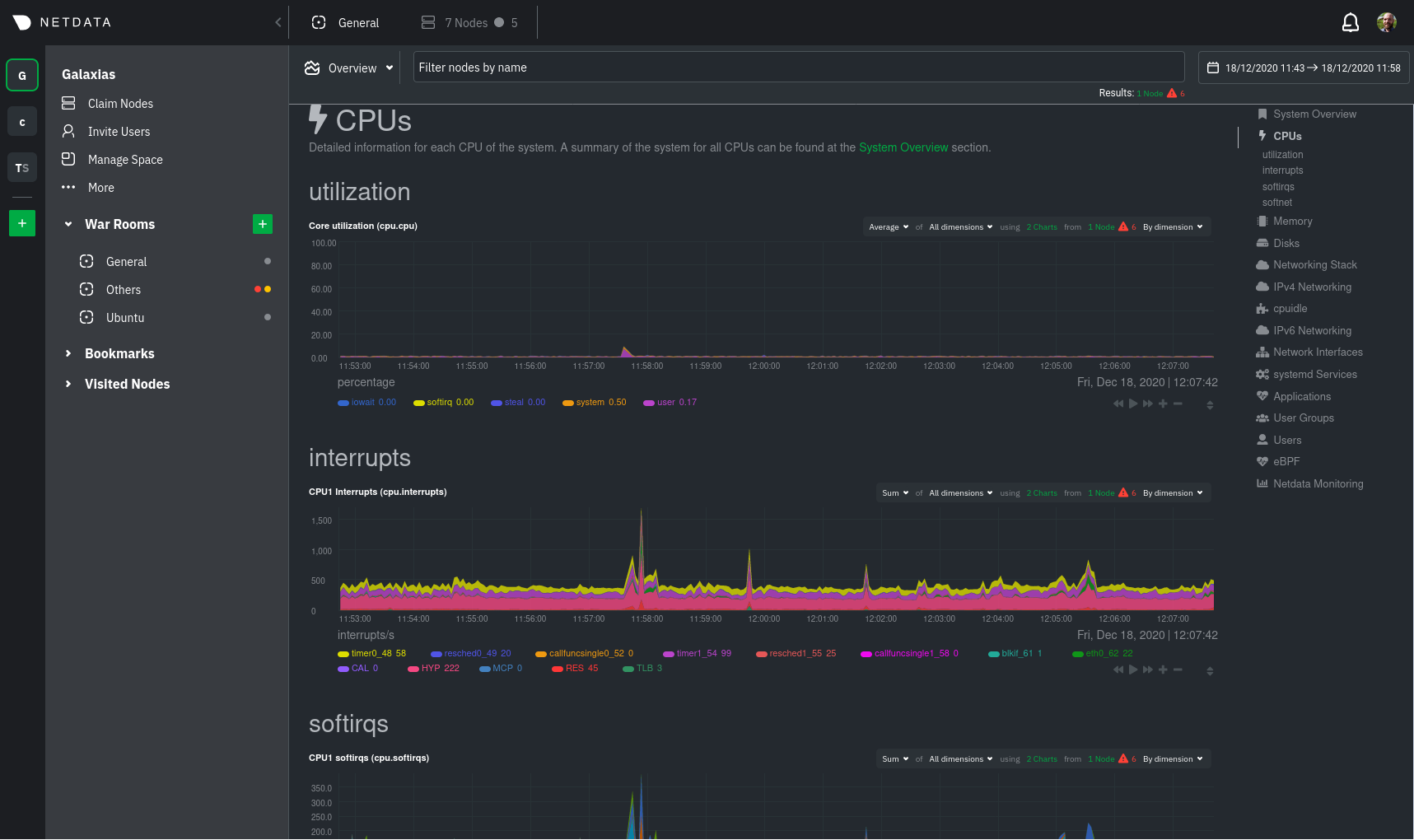1
2
3
4
5
6
7
8
9
10
11
12
13
14
15
16
17
18
19
20
21
22
23
24
25
26
27
28
29
30
31
32
33
34
35
36
37
38
39
40
41
42
43
44
45
46
47
48
49
50
51
52
53
54
55
56
57
58
59
60
61
62
63
64
65
66
67
68
69
70
71
72
73
74
75
76
77
78
79
80
81
82
83
84
85
86
87
88
89
90
91
92
93
94
95
96
97
98
99
100
101
102
103
104
105
106
107
108
109
110
111
112
113
114
115
116
117
118
119
120
121
122
123
124
125
126
127
128
129
130
131
132
133
134
135
136
137
138
139
140
141
142
143
144
145
146
147
148
149
150
151
152
153
154
155
156
157
158
159
160
161
162
163
164
165
166
167
168
169
170
171
172
173
174
175
176
177
178
179
180
181
182
183
184
185
186
187
188
189
190
191
192
193
194
195
196
197
198
199
200
201
202
203
204
205
206
207
208
209
210
211
212
213
214
215
216
217
218
219
220
221
222
223
224
225
226
227
228
229
230
231
232
233
234
235
236
|
<!--
title: "Get started guide"
date: 2020-05-04
custom_edit_url: https://github.com/netdata/netdata/edit/master/docs/getting-started.md
-->
# Get started guide
Thanks for trying the Netdata Agent! In this getting started guide, we'll quickly walk you through the first steps you
should take after installing the Agent.
The Agent can collect thousands of metrics in real-time and use its database for long-term metrics storage without any
configuration, but there are some valuable things to know to get the most out of Netdata based on your needs.
We'll skip right into some technical details, so if you're brand-new to monitoring the health and performance of systems
and applications, our [**step-by-step guide**](/docs/guides/step-by-step/step-00.md) might be a better fit.
> If you haven't installed Netdata yet, visit the [installation instructions](/packaging/installer/README.md) for
> details, including our one-liner script, which automatically installs Netdata on almost all Linux distributions.
## Access the dashboard
Open up your web browser of choice and navigate to `http://NODE:19999`, replacing `NODE` with the IP address or hostname
of your Agent. Hit **Enter**. Welcome to Netdata!

**What's next?**:
- Read more about the [standard Netdata dashboard](/web/gui/).
- Learn all the specifics of [using charts](/web/README.md#using-charts) or the differences between [charts,
context, and families](/web/README.md#charts-contexts-families).
## Configuration basics
Netdata primarily uses the `netdata.conf` file for custom configurations.
On most systems, you can find that file at `/etc/netdata/netdata.conf`.
> Some operating systems will place your `netdata.conf` at `/opt/netdata/etc/netdata/netdata.conf`, so check there if
> you find nothing at `/etc/netdata/netdata.conf`.
The `netdata.conf` file is broken up into various sections, such as `[global]`, `[web]`, `[registry]`, and more. By
default, most options are commented, so you'll have to uncomment them (remove the `#`) for Netdata to recognize your
change.
Once you save your changes, [restart Netdata](#start-stop-and-restart-netdata) to load your new configuration.
**What's next?**:
- [Change how long Netdata stores metrics](#change-how-long-netdata-stores-metrics) by changing the `page cache size`
and `dbengine disk space` settings in `netdata.conf`.
- Move Netdata's dashboard to a [different port](/web/server/) or enable TLS/HTTPS
encryption.
- See all the `netdata.conf` options in our [daemon configuration documentation](/daemon/config/).
- Run your own [registry](/registry/README.md#run-your-own-registry).
## Change how long Netdata stores metrics
Netdata can store long-term, historical metrics out of the box. A custom database uses RAM to store recent metrics,
ensuring dashboards and API queries are extremely responsive, while "spilling" historical metrics to disk. This
configuration keeps RAM usage low while allowing for long-term, on-disk metrics storage.
You can tweak this custom _database engine_ to store a much larger dataset than your system's available RAM,
particularly if you allow Netdata to use slightly more RAM and disk space than the default configuration.
Read our guide on [changing how long Netdata stores metrics](/docs/store/change-metrics-storage.md) to learn more and
use our the embedded database engine to figure out the exact settings you'll need to store historical metrics right in
the Agent's database.
**What's next?**:
- Learn more about the [memory requirements for the database
engine](/database/engine/README.md#memory-requirements) to understand how much RAM/disk space you should commit
to storing historical metrics.
## Collect data from more sources
When Netdata _starts_, it auto-detects dozens of **data sources**, such as database servers, web servers, and more. To
auto-detect and collect metrics from a service or application you just installed, you need to [restart
Netdata](#start-stop-and-restart-netdata).
> There is one exception: When Netdata is running on the host (as in not in a container itself), it will always
> auto-detect containers and VMs.
However, auto-detection only works if you installed the source using its standard installation procedure. If Netdata
isn't collecting metrics after a restart, your source probably isn't configured correctly. Look at the [external plugin
documentation](/collectors/plugins.d/) to find the appropriate module for your source. Those pages will contain
more information about how to configure your source for auto-detection.
Some modules, like `chrony`, are disabled by default and must be enabled manually for auto-detection to work.
Once Netdata detects a valid source of data, it will continue trying to collect data from it. For example, if
Netdata is collecting data from an Nginx web server, and you shut Nginx down, Netdata will collect new data as soon as
you start the web server back up—no restart necessary.
### Configure plugins
Even if Netdata auto-detects your service/application, you might want to configure what, or how often, Netdata is
collecting data.
Netdata uses **internal** and **external** plugins to collect data. Internal plugins run within the Netdata dæmon, while
external plugins are independent processes that send metrics to Netdata over pipes. There are also plugin
**orchestrators**, which are external plugins with one or more data collection **modules**.
You can configure both internal and external plugins, along with the individual modules. There are many ways to do so:
- In `netdata.conf`, `[plugins]` section: Enable or disable internal or external plugins with `yes` or `no`.
- In `netdata.conf`, `[plugin:XXX]` sections: Each plugin has a section for changing collection frequency or passing
options to the plugin.
- In `.conf` files for each external plugin: For example, at `/etc/netdata/python.d.conf`.
- In `.conf` files for each module : For example, at `/etc/netdata/python.d/nginx.conf`.
It's complex, so let's walk through an example of the various `.conf` files responsible for collecting data from an
Nginx web server using the `nginx` module and the `python.d` plugin orchestrator.
First, you can enable or disable the `python.d` plugin entirely in `netdata.conf`.
```conf
[plugins]
# Enabled
python.d = yes
# Disabled
python.d = no
```
You can also configure the entire `python.d` external plugin via the `[plugin:python.d]` section in `netdata.conf`.
Here, you can change how often Netdata uses `python.d` to collect metrics or pass other command options:
```conf
[plugin:python.d]
update every = 1
command options =
```
The `python.d` plugin has a separate configuration file at `/etc/netdata/python.d.conf` for enabling and disabling
modules. You can use the `edit-config` script to edit the file, or open it with your text editor of choice:
```bash
sudo /etc/netdata/edit-config python.d.conf
```
Finally, the `nginx` module has a configuration file called `nginx.conf` in the `python.d` folder. Again, use
`edit-config` or your editor of choice:
```bash
sudo /etc/netdata/edit-config python.d/nginx.conf
```
In the `nginx.conf` file, you'll find additional options. The default works in most situations, but you may need to make
changes based on your particular Nginx setup.
**What's next?**:
- Look at the [full list of data collection modules](/collectors/COLLECTORS.md)
to configure your sources for auto-detection and monitoring.
- Improve the [performance](/docs/guides/configure/performance.md) of Netdata on low-memory systems.
- Configure `systemd` to expose [systemd services
utilization](/collectors/cgroups.plugin/README.md#monitoring-systemd-services) metrics automatically.
- [Reconfigure individual charts](/daemon/config/README.md#per-chart-configuration) in `netdata.conf`.
## Health monitoring and alarms
Netdata comes with hundreds of health monitoring alarms for detecting anomalies on production servers. If you're running
Netdata on a workstation, you might want to disable Netdata's alarms.
Edit your `/etc/netdata/netdata.conf` file and set the following:
```conf
[health]
enabled = no
```
If you want to keep health monitoring enabled, but turn email notifications off, edit your `health_alarm_notify.conf`
file with `edit-config`, or with the text editor of your choice:
```bash
sudo /etc/netdata/edit-config health_alarm_notify.conf
```
Find the `SEND_EMAIL="YES"` line and change it to `SEND_EMAIL="NO"`.
**What's next?**:
- Follow the [health quickstart](/health/QUICKSTART.md) to locate and edit existing health entities, and then
create your own.
- See all the alarm options via the [health configuration reference](/health/REFERENCE.md).
- Add a new notification method, like [Slack](/health/notifications/slack/).
## Monitor multiple systems with Netdata Cloud
If you have the Agent installed on multiple nodes, you can use Netdata Cloud in two ways: Monitor the health and
performance of an entire infrastructure via the Netdata Cloud web application, or use the Visited Nodes menu that's
built into every dashboard.

You can use these features together or separately—the decision is up to you and the needs of your infrastructure.
**What's next?**:
- Sign up for [Netdata Cloud](https://app.netdata.cloud).
- Read the [infrastructure monitoring quickstart](/docs/quickstart/infrastructure.md).
- Better understand how the Netdata Agent connects securely to Netdata Cloud with [connection process](/claim/README.md) and
[Agent-Cloud link](/aclk/README.md) documentation.
## Start, stop, and restart Netdata
When you install Netdata, it's configured to start at boot, and stop and restart/shutdown. You shouldn't need to start
or stop Netdata manually, but you will probably need to restart Netdata at some point.
- To **start** Netdata, open a terminal and run `sudo systemctl start netdata`.
- To **stop** Netdata, run `sudo systemctl stop netdata`.
- To **restart** Netdata, run `sudo systemctl restart netdata`.
See our doc on [starting, stopping, and restarting](/docs/configure/start-stop-restart.md) the Netdata Agent for
details.
## What's next?
Even after you've configured `netdata.conf`, tweaked alarms, learned the basics of performance troubleshooting, and
connected all your systems in Netdata Cloud or added them to the Visited nodes menu, you've just gotten started with
Netdata.
Take a look at some more advanced features and configurations:
- Centralize Netdata metrics from many systems with [streaming](/streaming/README.md)
- Enable long-term archiving of Netdata metrics via [exporting engine](/exporting/README.md) to time-series databases.
- Improve security by putting Netdata behind an [Nginx proxy with SSL](/docs/Running-behind-nginx.md).
Or, learn more about how you can contribute to [Netdata core](/CONTRIBUTING.md) or our
[documentation](/docs/contributing/contributing-documentation.md)!
[](<>)
|
